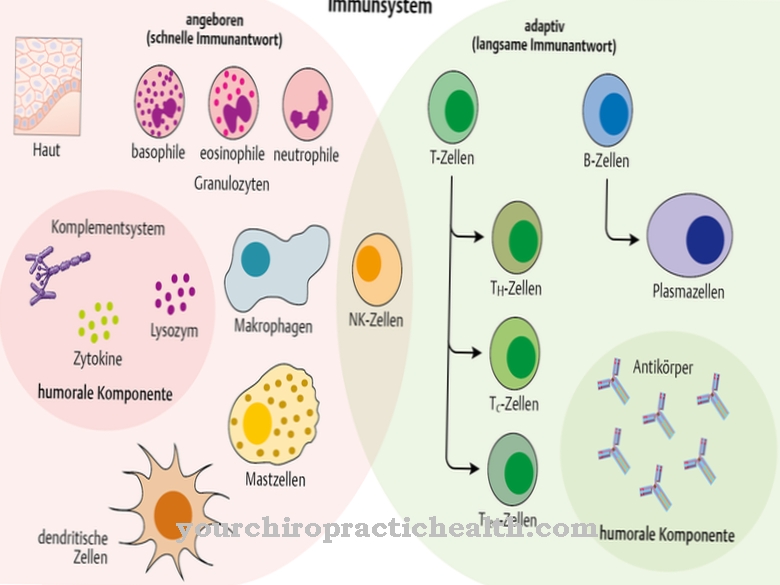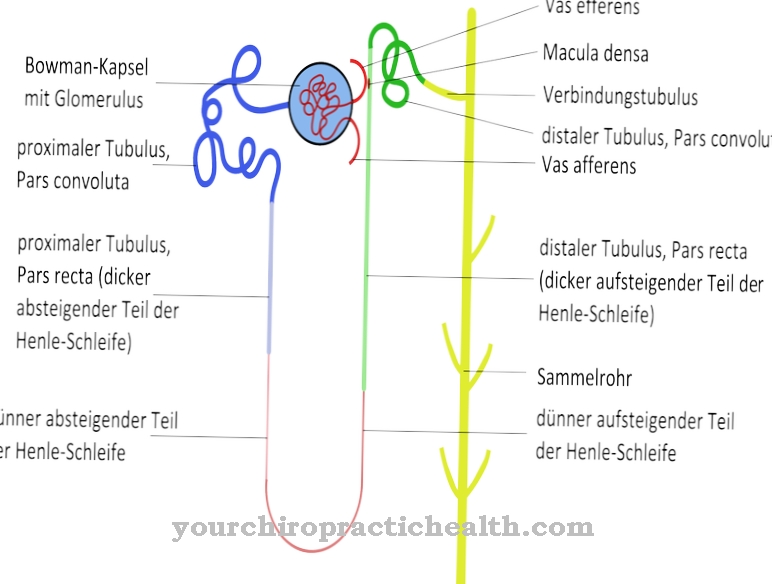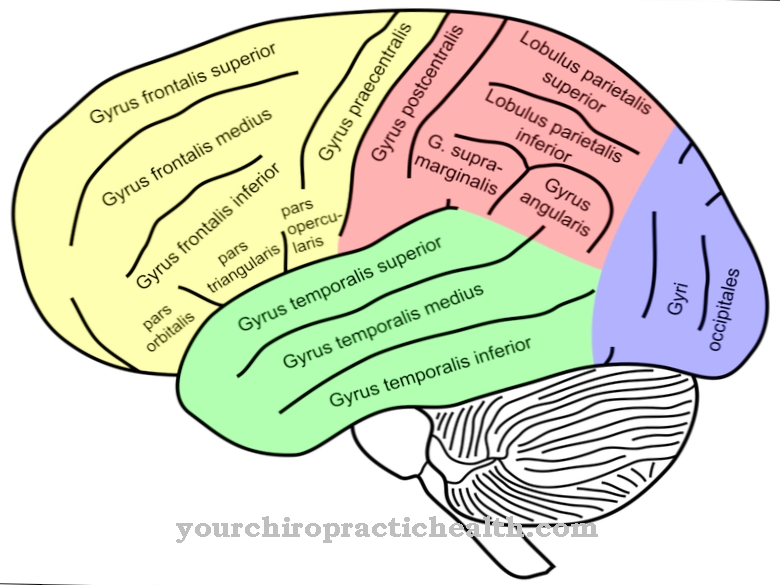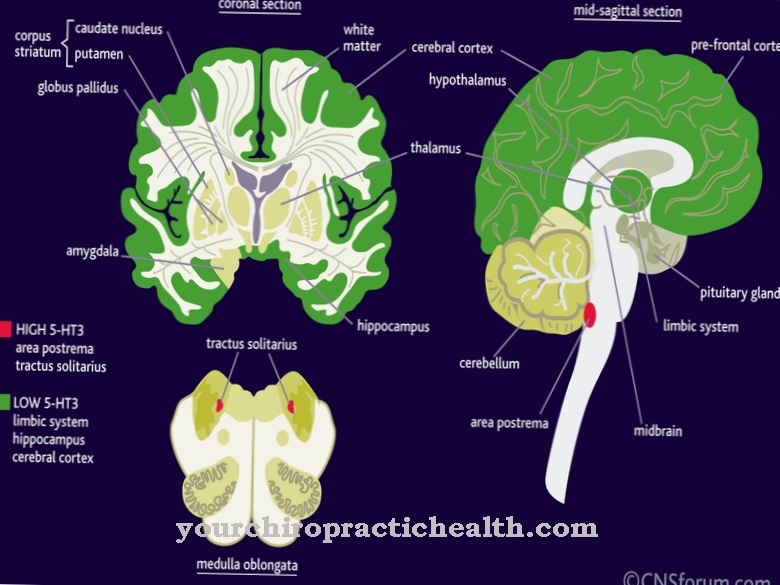As skull are called the bones of the head. In medical parlance, the skull is also called "cranium". If, according to the doctor, a process is "intracranial" (tumors, bleeding, etc.), this means "located in the skull".
What is the skull
One would think that the skull a single, large, bony ball with simply the brain inside - far from it: the skull is pretty much the most complicated structure that human nature has in store for interested anatomists.
A myriad of overgrown individual bones, furrows, elevations and penetration points make the bony skull a real difficult task in three-dimensional thinking. In the following, at least the rough structures and their connections with diseases will be sorted out a bit.
Anatomy & structure
First of all, it makes sense to subdivide into brain skull and facial skull. The anatomy of the roof of the skull is quite clear, meaningfully part of the skull: this is where the parietal, frontal, temporal and occipital bones meet and form an oval hood.
At their transition points are the so-called cranial sutures or sutures, which are not yet completely fused together at birth and thus form the famous "holes in the head", the fontanelles, which can be felt in newborns and toddlers up to two years of age. The plates of the roof of the skull also allow small blood vessels to pass through, although the main blood supply to the skull is almost exclusively through the large cervical vessels.
Incidentally, "dome" is an old term for the roof of the skull, which is still often used in clinical parlance today. The skullcap is covered by a sinewy plate, the galea aponeurotica, the fatty tissue of the scalp and finally the skin with the scalp hair (if one has it).
The anatomical structure of the skull base, which forms the underside of the skull balloon, so to speak, and of course has to have lots of containers for the structures of the brain and face and lots of passageways for nerves, blood vessels and the spinal cord, is much more complicated.
The ethmoid, sphenoid, and the frontal and occipital bones form the main pillars of the base of the skull, and the pair of temporal bones on both sides also play a role here. It is the occiput that allows the spinal cord to emerge into the vertebral canal through a large hole at the lower back, the foramen magnum. But that would only describe the brain skull.
The facial skull includes individual bones that are quite complex in shape and have lots of nooks and crannies for the throat, oral cavity, nasal cavity, paranasal sinuses (the most important: frontal sinus, two maxillary sinuses, sphenoid sinus and ethmoid cells) and eye socket. The facial skull consists of two large bones, the upper and lower jaw, as well as six smaller bones: the cheekbones, lacrimal bones, nasal bones, ploughshare, palatine bones and inferior turbinate bones.
The description of the individual connecting paths and lines fills many pages of an anatomy book and can hardly be understood without pictures.
Functions & tasks
The function Skull is actually very simple: the protection of the brain and everything else that is in it. The protection of the brain can be compared to the protection of the occupant in a modern car, namely according to a three-step principle: crumple zone - stable passenger cell - seat belt or airbag.
These three levels can also be recognized in the principle of the enveloping of the brain: the scalp is the deformable zone for light blows and bruises, the skull is the stable zone, and the CSF space around the brain acts as a delay zone to absorb any kind of vibrations for the sensitive Nerve tissue.
The brain skull is built according to the lightweight construction principle: wherever possible, evolution has built in air cavities (sinuses), the bone plates are relatively thin, but are optimally protected against external forces by a clever system of reinforced pillars and internal tension.
As a starting point for muscles of the neck, the skull is also important for the movement of the head. Furthermore, a myriad of mimic muscles connect the bones of the facial skull, and food intake is also difficult without the functional unit of the upper and lower jaw.
Illnesses & ailments
There are a plethora of diseases and injuries that can be found in the field of Skull play. In the following, therefore, only a small "sightseeing flight" can be made.
When exposed to brute force, be it through blows and blows or falling on the ground or hard objects, the roof of the skull and the facial skull can be injured. Skull fractures always refer to a fracture of the skull roof, which can be open (open connection between the brain and the outside world) and closed (the outer skin is still intact). A skull base fracture usually requires even greater force and is even worse, since vital connection and conduction pathways between the interior of the skull and the rest of the body can be destroyed or pressed.
Bleeding is a major problem in emergency medicine, a rough distinction is made between hematomas of the scalp (harmless) and epidural bleeding (over the dura, the hard meninges), subdural bleeding (under the dura) and subarachnoid or brain mass bleeding. The main problem with these injuries is not the initial injury or loss of blood, but rather the space: The skull is such a stable structure and so densely filled with tissue that bleeding takes up a lot of space and displaces healthy tissue.
As a result, vital conduction pathways are pinched off, especially the connection between the brain and spinal cord in the foramen magnum is at risk: if the brain stem is trapped here, the circulatory and respiratory centers there are pinched off and the person concerned dies within a very short time. Subdural hemorrhages in particular are tricky because after an injury they only slowly nourish themselves from venous bleeding and only suddenly become symptomatic with clouding of consciousness after hours or days, namely when the intracranial pressure has become too high.
In addition to the injuries, there are also tumor diseases of the skull, with benign meningiomas (starting from the meninges) being observed in many autopsies without ever causing problems for the person concerned. However, they can also grow large and cause intracranial pressure and headaches. Blood cancers such as multiple myeloma also often affect the skull.












.jpg)



.jpg)










.jpg)
